Students and staff at the school division’s 11 Digital Learning Anchor Schools have been tinkering, troubleshooting, experimenting, exploring, creating and collaborating with technology for months now.
That’s by design, explained Chief Academic Officer Amy Cashwell.
“It’s not every day you’re given a project in which you can really tell schools, ‘We’re going to give you some devices and we really want you to explore. We want you to use this as a laboratory experience where you can really challenge our notions as a school division about what it is to instill active, collaborative learning in the classroom,’” Cashwell said.
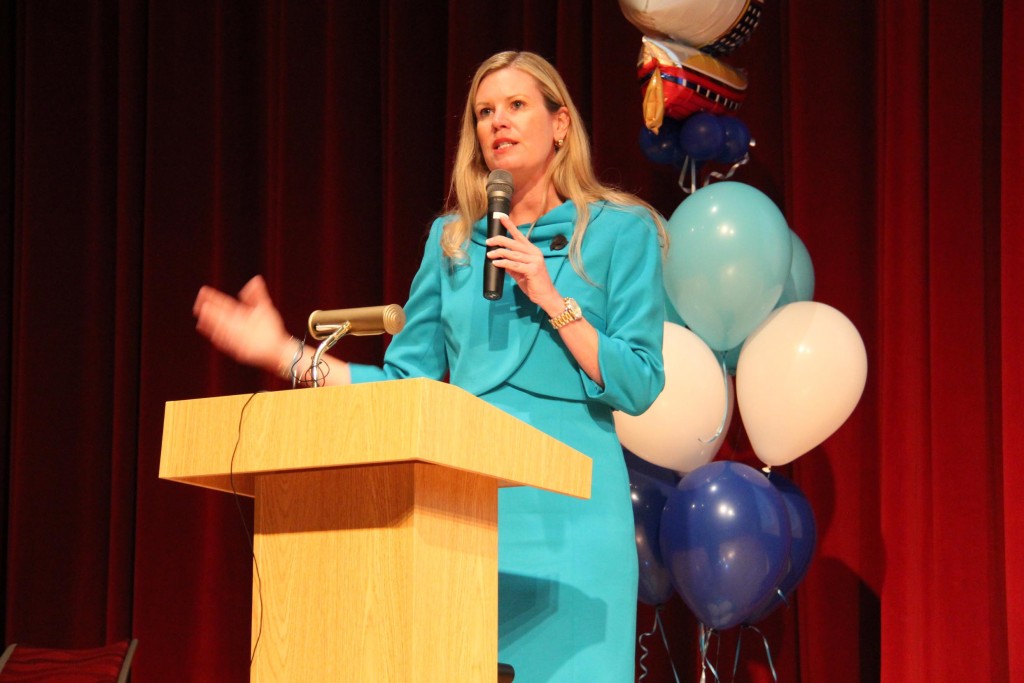
Challenging traditional notions of education by experimenting with digital learning has been the task of Anchor Schools since the beginning of the school year. The initiative is aligned with the school division’s strategic framework Compass to 2020 to transition classrooms to more personalized learning environments that are student-centered and increase flexibility with respect to how and where learning occurs.
Representatives from each Anchor School shared lessons learned to date in a showcase event April 20 held at Great Neck Middle School.
Kingston Elementary School fifth-graders couldn’t hide their enthusiasm.
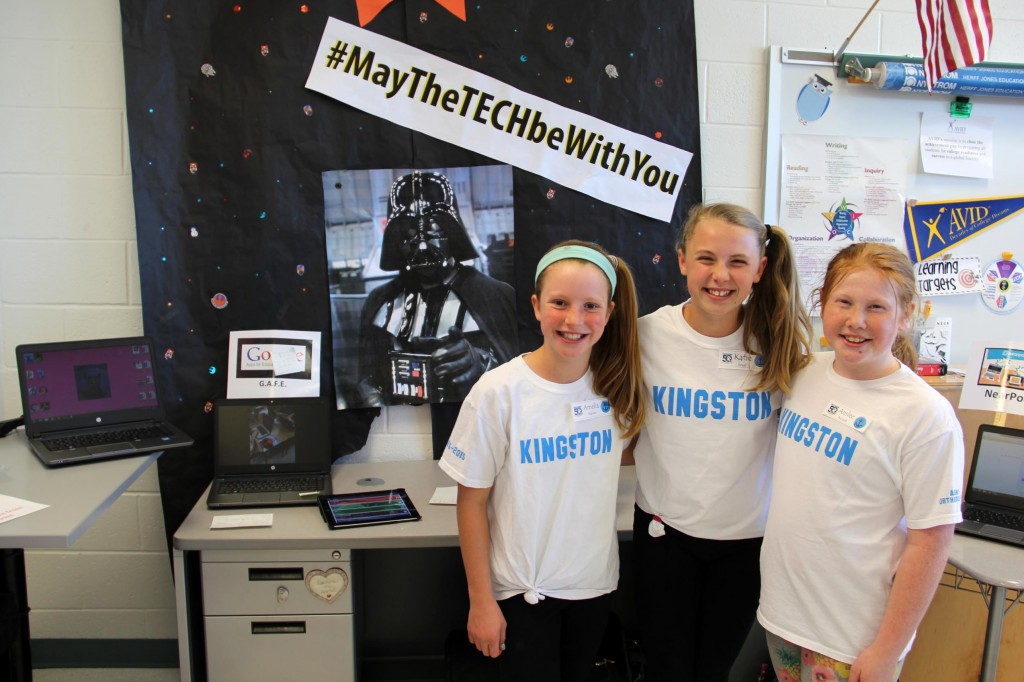
“Technology is amazing! It has so much power,” exclaimed Anslee Burnett. As the student manager of the school’s WKES news team, she has experimented with green screen backgrounds, audio technology, live streaming and more.
At a display near Burnett, Katie Royal shared with guests, “We’re explaining GAFE, that’s Google Apps for Education, and it’s a great way to stay organized.”
“There is Google Classroom, Google Slides, Google Docs, Google Drive,” she continued and explained how she’s used each one.
“It’s better than keeping everything in a binder,” Royal summarized with a broad smile.
Organization. Efficiency. Access. Fun.
These were common themes from presenters across 11 different rooms.
“I used to think that school was all boring, just paper and pencil, and I didn’t like it,” admitted Tallwood Elementary School fifth-grader Charlie Ackla. He used a tablet at home every day but did not use as much technology at school.
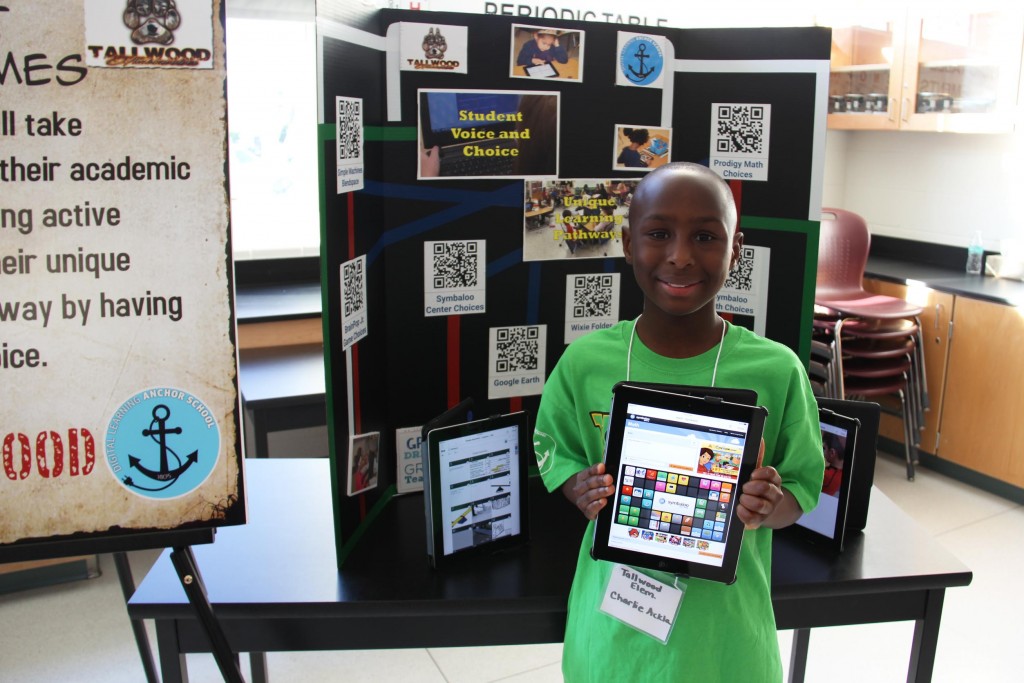
“Now it’s like being at home,” Ackla said. “I can download apps. Symbaloo is one of my favorites. It has all the sites from your teacher there for you already. You can do a project on it. It keeps you organized.”
Organizing notes has been helpful to Great Neck Middle School (GNMS) eighth-grader Jordan Parker-Ashe, who showed visitors notes she took while studying a Tale of Two Cities.
“Just using a program such as OneNote has skyrocketed my English grade,” said Parker-Ashe. “In the beginning of the year, I didn’t take as many notes and wasn’t doing so well. Then I started writing down everything that was happening in the book and my grades went way up.”
And by “writing down everything,” Parker-Ashe meant typing on her school-issued device. She admitted that having to handwrite notes kept her from writing down much of anything.
“This is a lot faster and more intuitive than handwriting because I can get this done in seconds,” she said.
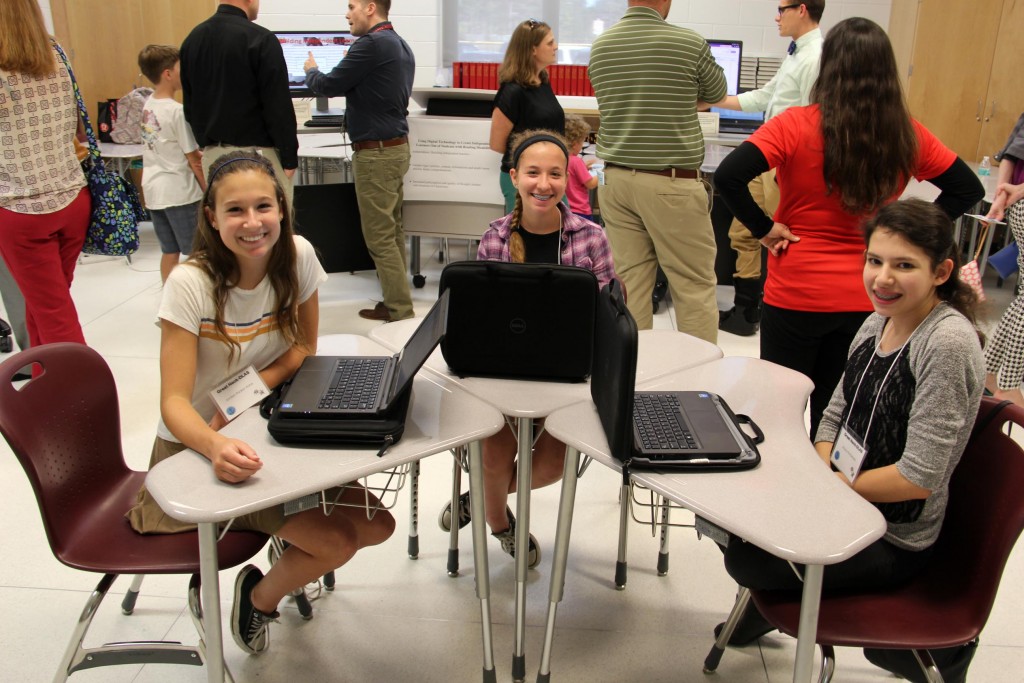
When asked if classrooms should be paperless, Parker-Ashe and her fellow eighth-grade presenters quickly disagreed.
“I don’t think I would like that because, I mean, it’s hard,” said Kylie Levine. “For math, in geometry and algebra, you have to be able to write down your formulas and everything. I don’t think I could do it. Not every subject can go paperless.”
Ariana Kyriakides agreed, reflecting on her experiences with math Standards of Learning online tests. “You kind of have to copy it down to work through it,” she said.
Rosemont Elementary School fourth-grader Matthew Skuse may disagree with the middle school students.
“Instead of writing which gives us hand cramps, we can just type it,” said Skuse. “It is an efficient way to do schoolwork,” he says of technology.
After reflection, he added, “Well, typing can give us hand cramps as well, but it doesn’t hurt as much.”
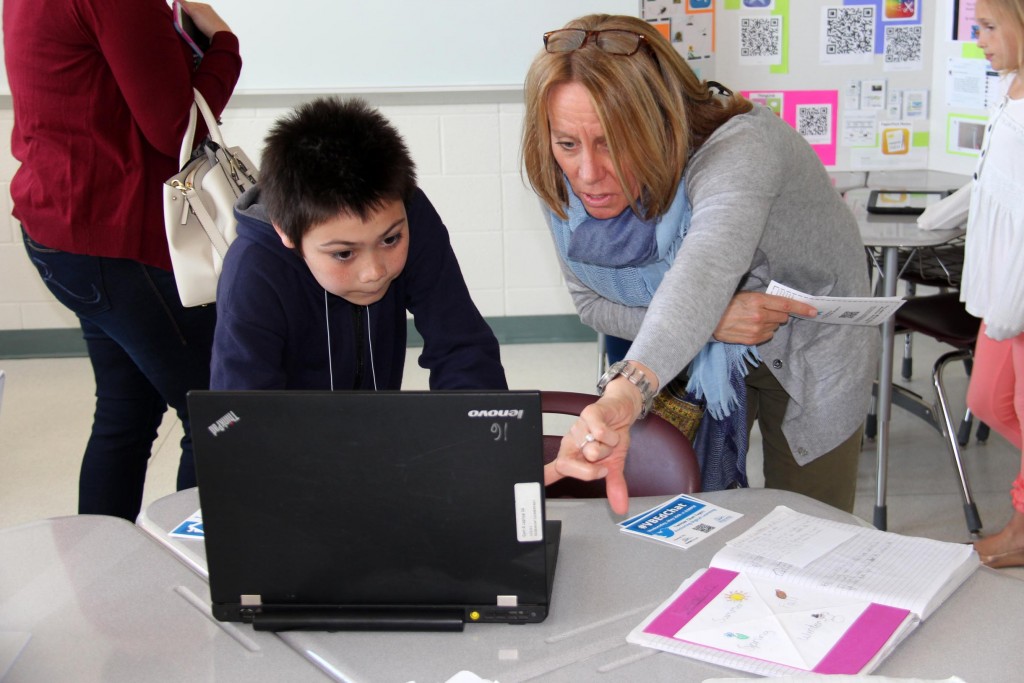
Skuse also likes how technology can transport you.
“The thing I like about Skype is that it’s like a free field trip,” he said describing how his classmates skyped with the school division’s sustainability officer Tim Cole while he was at the new Kemps Landing/Old Donation School building under construction.
“He gave us a tour and we didn’t even have to go there. We got an overview of the whole place,” remarked Skuse.
Standing in the middle of his school’s presentation room, Tallwood Elementary School principal David French couldn’t hide his pride.
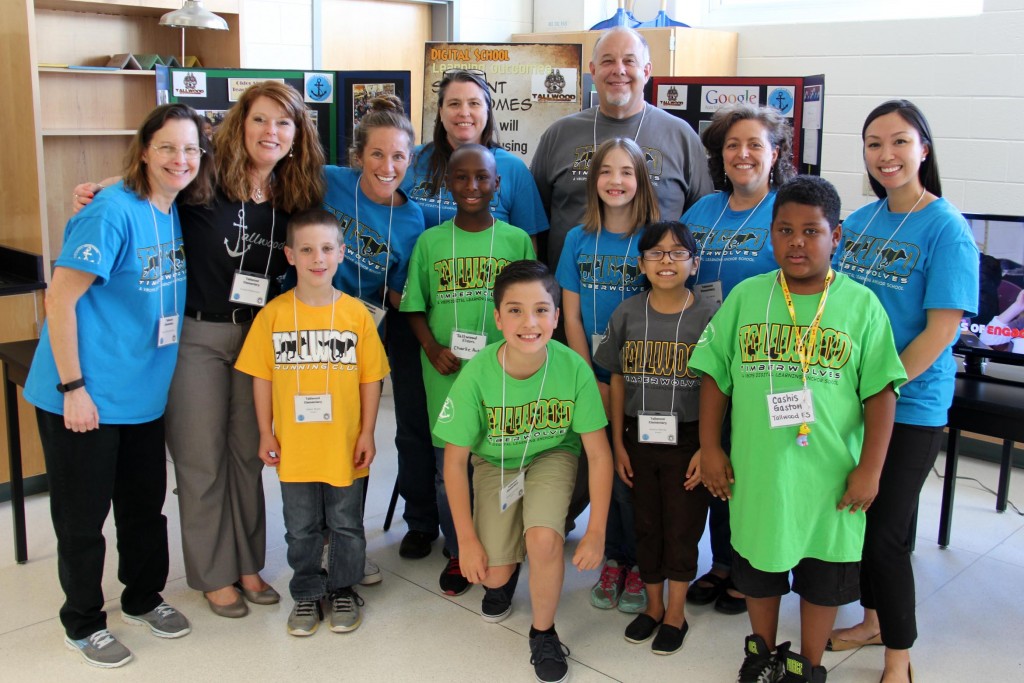
“The most fun I’ve had tonight is watching the students explain the technology, show what they’ve learned and seeing how much they’ve grown this year,” said French.
It has been a learning experience for school leaders as well.
“You have to put in work up front before you bring in devices. You have to know how to plan for [integrating technology] and what to do with the tools to engage students,” French said. “You’re not rolling in a whole cart of laptops and saying, ‘Go at it.’”
“You’re taking small steps,” French continued, “helping teachers learn so they’re not so far outside their comfort zone that they give up on it. Schools are starting to take advantage of learning new tools and learning new ways. It’s powerful. It really is powerful.”
And teachers don’t have to be perfect, observed Thoroughgood Elementary School principal Cheryl Zigrang. After all, they have digital natives by their side.
“Just seeing what the children can do, which is so much more than the staff thought could happen — that’s definitely been a lesson learned,” said Zigrang. “The teachers will tell you, let the kids run with things. Don’t worry about being perfect. Don’t worry about knowing everything about [technology] and just give it a try. Again, see where the students will take it.”
Students in grades K-12 are taking it in many directions together with their peers and school staff.
Programming robots. Posting comments for class review and discussion. Creating online books. Designing interactive presentations.
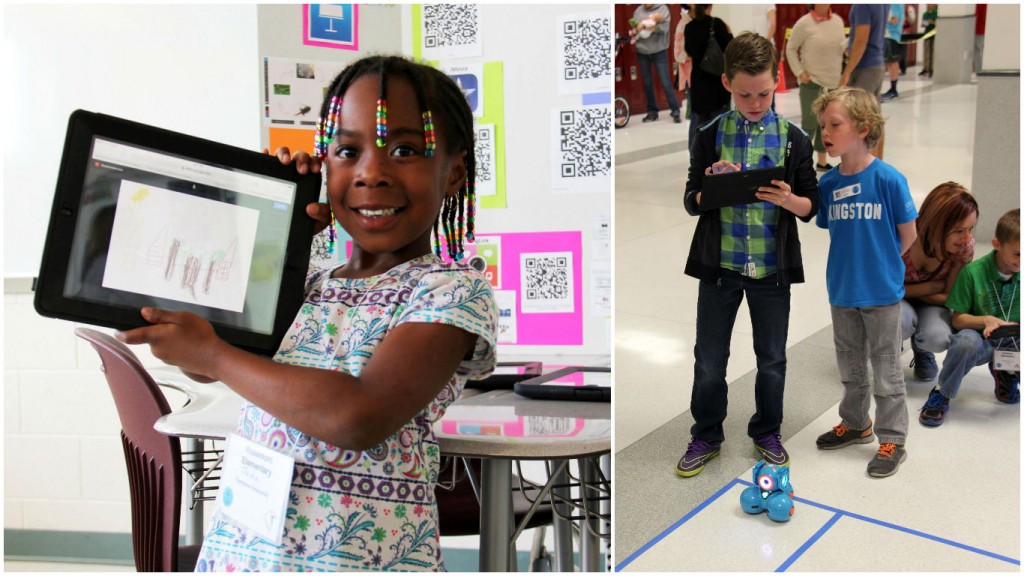
However, technology is only one piece of the pathway to personalized learning, Cashwell reminded showcase guests.
“Tonight you’ll see a lot of tools, tricks and gadgets, but keep in mind that it’s not just about the technology. It’s not just about the devices. It’s not about taking all of those new things and layering them over an old environment,” said Cashwell. “It’s about working to co-design with our students…meeting student needs, removing all gaps and ensuring that all our students are on a trajectory for success.”
Visit the VBSchools Facebook page to see more photos from the Digital Learning Anchor School showcase. More information about the division’s Anchor School initiative, including a list of participating schools, is available on www.vbschools.com.
